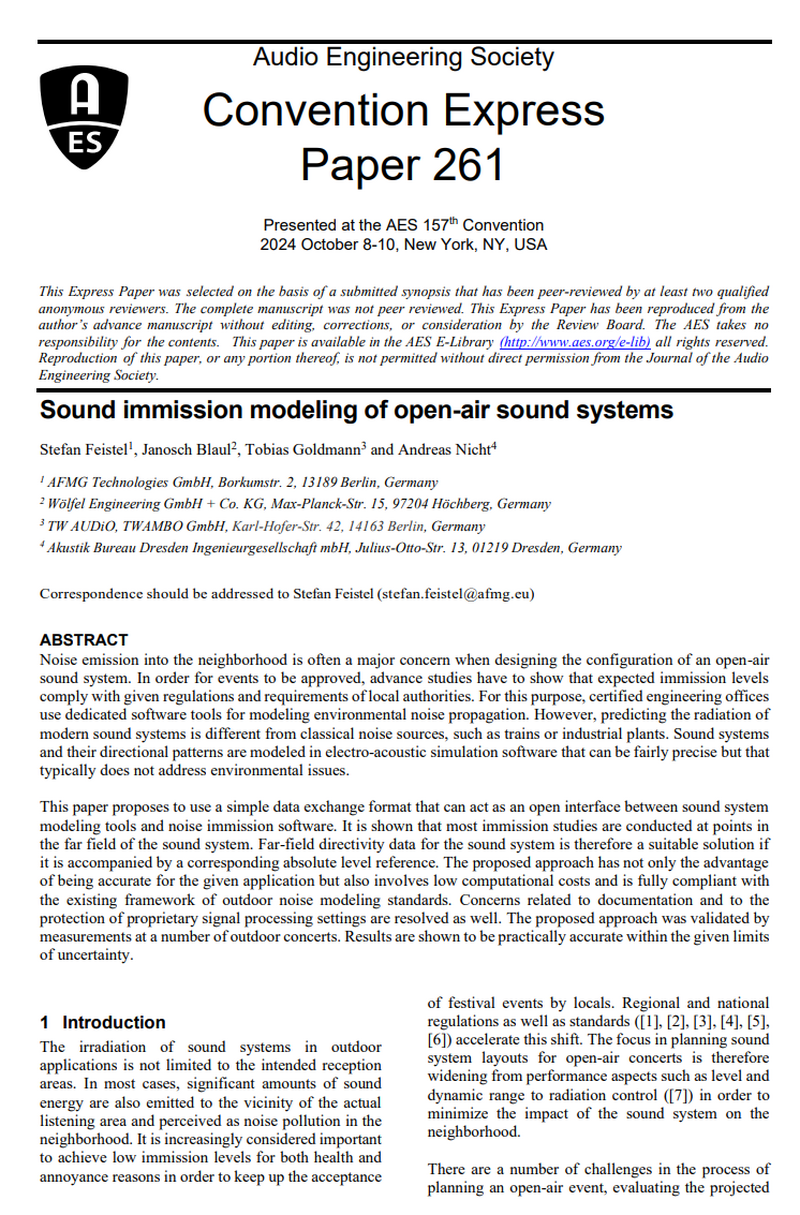Sound immission modeling of open-air sound systems (Paper)
"Sound immission modeling of open-air sound systems", paper presented at the AES Show New York, USA, October 8-10, 2024.
Link to the paper in the AES Online E-Library. (You have to be a member of the AES online library. Please note that subscription costs are low.)
Stefan Feistel
AFMG Technologies GmbH, Berlin, Germany
Janosch Blaul
Wölfel Engineering GmbH + Co. KG, Höchberg, Germany
Tobias Goldmann
TW AUDiO, TWAMBO GmbH, Berlin, Germany
Andreas Nicht
Akustik Bureau Dresden Ingenieurgesellschaft mbH, Dresden, Germany
Abstract
Noise emission into the neighborhood is often a major concern when designing the configuration of an open-air sound system. In order for events to be approved, advance studies have to show that expected immission levels comply with given regulations and requirements of local authorities. For this purpose, certified engineering offices use dedicated software tools for modeling environmental noise propagation. However, predicting the radiation of modern sound systems is different from classical noise sources, such as trains or industrial plants. Sound systems and their directional patterns are modeled in electro-acoustic simulation software that can be fairly precise but that typically does not address environmental issues.
This paper proposes to use a simple data exchange format that can act as an open interface between sound system modeling tools and noise immission software. It is shown that most immission studies are conducted at points in the far field of the sound system. Far-field directivity data for the sound system is therefore a suitable solution if it is accompanied by a corresponding absolute level reference. The proposed approach has not only the advantage of being accurate for the given application but also involves low computational costs and is fully compliant with the existing framework of outdoor noise modeling standards. Concerns related to documentation and to the protection of proprietary signal processing settings are resolved as well. The proposed approach was validated by measurements at a number of outdoor concerts. Results are shown to be practically accurate within the given limits of uncertainty.
Practical benefits
This paper addresses the complexities of sound emission modeling for open-air sound systems, providing valuable guidance for minimizing noise pollution and ensuring compliance with environmental regulations. The paper shows that electro-acoustic design software can be used to simulate outdoor sound systems and export far-field directivity data for individual loudspeaker arrays to accurately model their radiation in environmental noise software. These data sets can be calculated in AFMG’s EASE software and then exported to Wölfel’s IMMI software to be used for predicting the impact of the sound system at selected immission points in the neighborhood.
